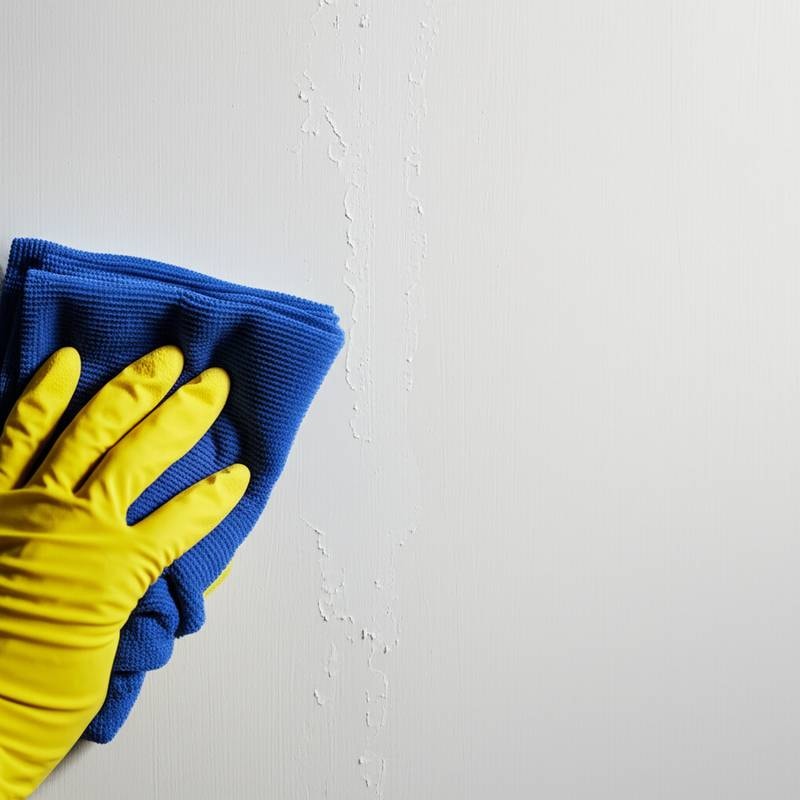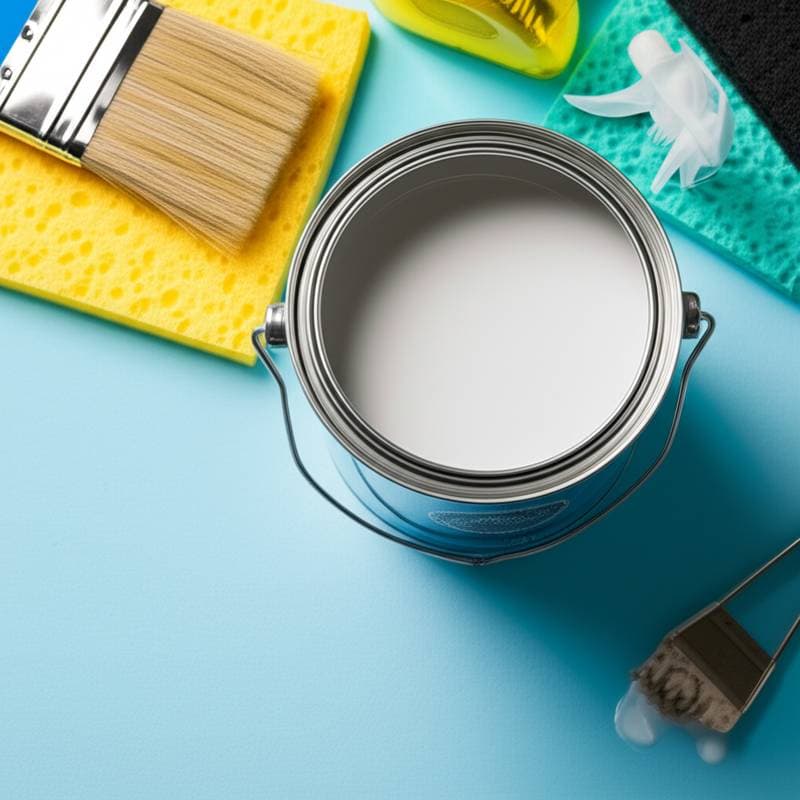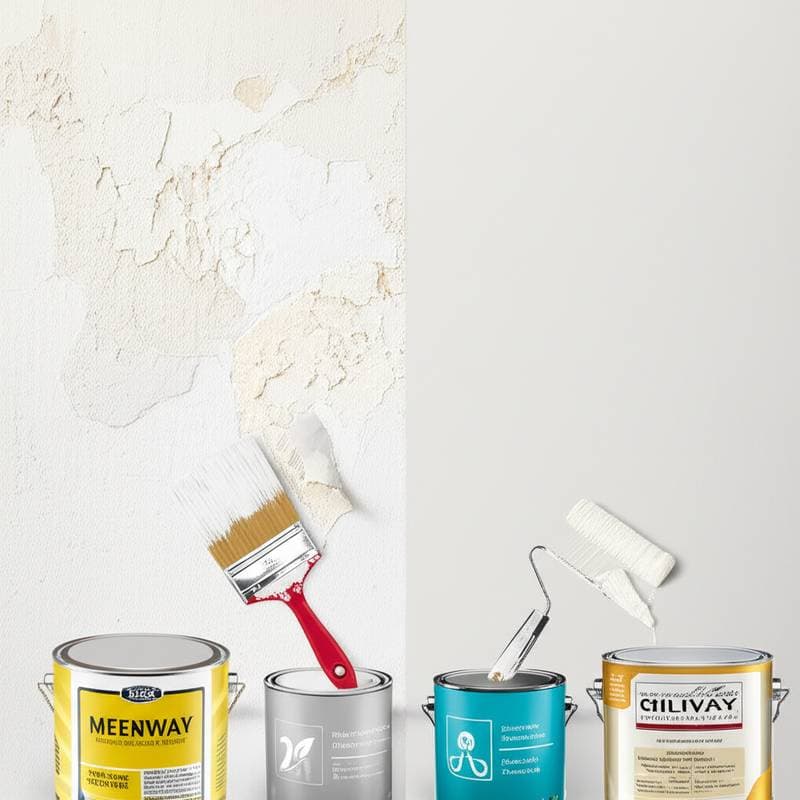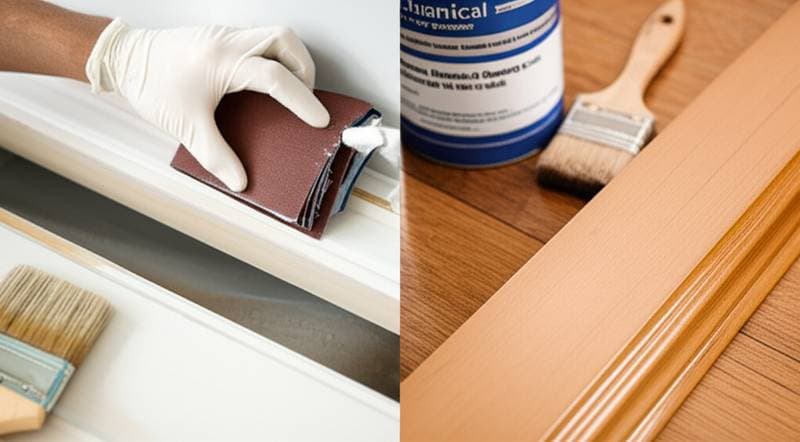The Hidden Danger of Skipping the TSP Rinse in Paint Preparation
Proper surface preparation forms the foundation of any successful paint job. Homeowners often prioritize paint color and application techniques, yet overlook critical cleaning steps. One frequent error involves neglecting to rinse after applying trisodium phosphate (TSP), a common degreaser. This residue undermines paint adhesion and leads to premature failure.
TSP effectively removes grease, grime, and contaminants that hinder paint bonding. However, without thorough rinsing, it leaves an alkaline film on the surface. This guide explores the science behind this issue, outlines consequences, and provides step-by-step techniques for effective preparation.
Role of TSP in Surface Cleaning
TSP serves as a heavy-duty cleaner for walls, trim, cabinets, and exterior surfaces before painting. Mixed with water, it dissolves oils, mold, and stubborn residues beyond the reach of standard soaps. The process etches the surface slightly, promoting better paint grip.
Despite its benefits, TSP introduces an alkaline residue during cleaning. This substance neutralizes contaminants but must be removed to avoid interfering with paint chemistry. Failure to rinse allows the residue to dry, forming a barrier that repels new coatings.
Consequences of Residual TSP
Unrinsed TSP creates an invisible film that initially accepts paint but fails over time. As the paint cures, the alkaline layer reacts, causing adhesion breakdown. Key problems include peeling within months, blotchy finishes from chemical interactions, and chalking in high-exposure areas.
These issues accelerate wear, reducing paint lifespan from years to mere months. Maintenance demands increase, with repairs often exceeding original costs. Early detection through visual checks can mitigate damage, but prevention proves more effective.
Financial Impact of Preparation Oversights
Inadequate preparation inflates project expenses through rework. A botched job requires stripping, additional priming, and full repainting, often doubling costs. For instance, a standard interior room repaint ranges from $400 to $900, but failure adds $200 to $500 in fixes.
Exterior projects face even higher stakes, with base costs of $3,000 to $7,000 escalating by 30 to 60 percent due to residue-related bubbling or flaking. Investing in thorough cleaning upfront saves significant sums over the home's lifespan.
Preparation Cost Breakdown
Surface prep typically accounts for $1 to $2 per square foot, covering cleaning, rinsing, and priming. Shortcuts like skipping rinses yield temporary savings but lead to expensive corrections.
| Task | Cost per Sq. Ft. | Purpose | Risk if Omitted |
|---|---|---|---|
| Degreasing | $0.50 - $1.00 | Removes oils and dirt | Weak adhesion |
| TSP Application | $0.25 - $0.75 | Targets heavy residues | Lingering contaminants |
| Rinsing and Drying | $0.25 - $0.50 | Eliminates alkaline film | Peeling and discoloration |
| Sanding and Priming | $0.75 - $1.50 | Ensures smooth bonding | Uneven results |
Step-by-Step TSP Application and Rinsing
Effective TSP use demands precision to clean without complications. Start by mixing one-quarter cup of TSP per gallon of warm water; excessive strength risks surface damage and heavier residue.
Apply the solution with a sponge in manageable sections, avoiding oversaturation. Rinse promptly with clean water using a fresh sponge or cloth, repeating until the surface feels neutral. Allow full drying, typically several hours, before proceeding to sanding or painting.
Test readiness by gliding a hand over the area: it should feel textured yet dry, without slipperiness. For contaminated zones like kitchens, multiple rinses ensure complete removal.
Variables Influencing Preparation Efforts
Surface characteristics dictate cleaning intensity. Glossy paints or weathered exteriors require extra attention to grease and oxidation. Contamination levels, from light dust to heavy smoke residue, extend rinsing needs.
Accessibility challenges, such as high ceilings, boost labor. Water hardness can deposit minerals mimicking TSP residue, so opt for distilled water in final passes. Larger projects may justify tools like sprayers to streamline the process.
DIY Versus Professional Approaches
Homeowners manage small-scale TSP cleaning with basic supplies costing $20 to $40, including gloves and buckets. Time investment dominates, with rinsing spanning hours for a single room.
Professionals offer reliability through specialized equipment and neutralizers, charging $1.50 to $3.00 per square foot for prep. Their expertise minimizes errors, safeguarding the overall investment.
Long-Term Advantages of Thorough Rinsing
Meticulous rinsing enhances paint durability, yielding even adhesion and vibrant, lasting colors. Finishes resist environmental stressors like moisture and wear, extending service life by years.
Over a decade, this approach avoids multiple repaints, saving $500 to $2,000. Repairs from adhesion failures drop by $200 to $600, while maintenance eases, cutting annual upkeep by $100 to $300.
| Advantage | Outcome | Savings Estimate |
|---|---|---|
| Extended Durability | Infrequent repaints | $500 - $2,000 |
| Strong Bonding | Minimal peeling | $200 - $600 |
| Aesthetic Consistency | Vibrant, uniform look | Enhanced property value |
| Simplified Care | Reduced cleaning needs | $100 - $300 yearly |
Practical Tips for Cost-Effective Prep
Homeowners trim expenses while upholding standards through targeted actions. Perform initial dusting to shorten professional time. Measure TSP precisely to avoid excess and prolonged rinsing.
Employ warm water for faster residue dissolution. Time projects for low-humidity days to accelerate drying. Post-dry, swipe with a damp cloth to confirm no chalky remnants before painting.
Budgeting for Reliable Results
Allocate 15 to 25 percent of total costs to preparation; for a $3,000 job, this means $450 to $750. Seek detailed estimates specifying TSP use and rinsing protocols. Inquire about readiness testing to align expectations and secure enduring outcomes.
Common Questions on TSP and Rinsing
What Occurs If Paint Applies Over TSP Residue?
Unremoved residue forms an alkaline barrier, prompting peeling or bubbling soon after application. Thorough water rinsing prevents these adhesion failures.
Alternatives to TSP for Pre-Paint Cleaning?
Phosphate-free degreasers suit mild tasks, while TSP excels against oils or mold. Regardless, rinse fully to eliminate any remaining films.
Indicators of Sufficient Rinsing?
Dried surfaces feel clean and rough, not slick. A cloth test reveals no white marks, confirming neutrality.
Suitability of TSP Across Surfaces?
Test on inconspicuous spots, as it may etch aluminum or glass. Dilute for delicate areas and protect with gear.
Necessity of Professionals for TSP Tasks?
Ideal for expansive or outdoor work; their tools ensure precision. DIY suffices for minor interiors with diligence.
Optimal Interval Post-Rinsing Before Painting?
Dry fully, often overnight in damp conditions, to prevent moisture traps causing blisters.
Mastering TSP rinsing builds a solid base for paint success. This practice transforms routine projects into durable, attractive upgrades that endure.



